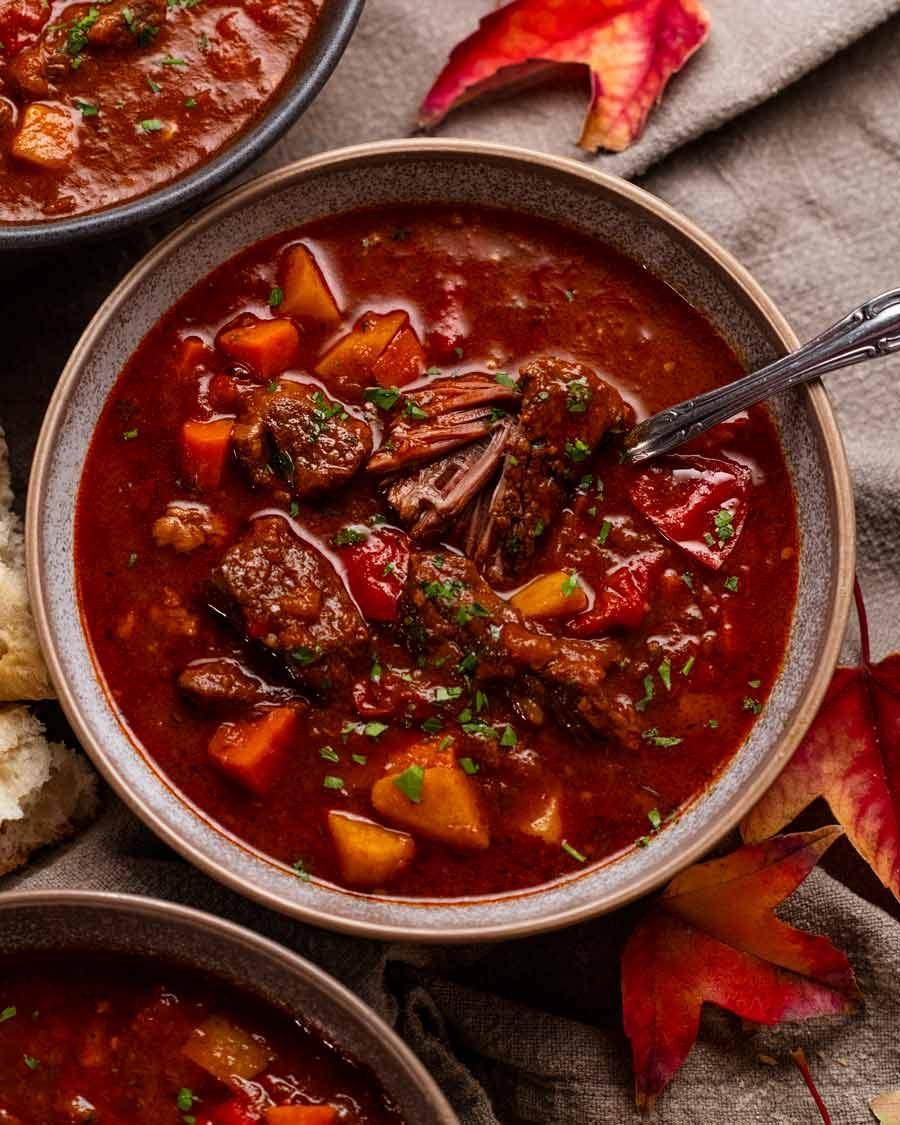In the heart of Central Europe, where culinary traditions intertwine with tales of history, lies a dish that has become synonymous with warmth and comfort: Hungarian goulash. This rich and hearty beef stew, steeped in paprika and infused with an array of aromatic spices, tells a story of resilience and resourcefulness, reflecting the spirit of the Hungarian people. As we delve into the origins and variations of this iconic dish, we uncover not just a recipe, but a profound connection to family gatherings, festive occasions, and the simple joys of sharing a meal with loved ones. Join us on a flavorful journey as we explore the art of savoring Hungarian goulash,a timeless classic that continues to warm hearts and satisfy appetites across the globe.
Exploring the Rich History and Cultural Roots of Goulash
The journey of goulash weaves through centuries, revealing a tapestry of flavors and traditions that reflect the heart and soul of Hungarian culture.This iconic dish, often identified as a symbol of Hungarian cuisine, originated in the 9th-century when Hungarian shepherds would prepare it over open flames using simple ingredients available to them. As the dish evolved through the ages, it absorbed influences from neighboring countries, merging flavors and techniques that enriched its essence. traditional goulash is much more than just a stew; it’s a representation of a communal experiance,often enjoyed during family gatherings and festive occasions,where stories are shared over steaming bowls of hearty beef mingled with paprika-spiced broth.
Several key components define goulash and its unique character, each rooted in history and geographical diversity. The main ingredients include beef, onions, carrots, potatoes, and the star of the show—Hungarian paprika. This spice not only gives goulash its distinctive red hue but also represents the agricultural prowess of Hungary.Below are notable variations of goulash, reflecting regional adaptations:
| Type of goulash | Main Features |
|---|---|
| Traditional Hungarian | Beef, onions, paprika, and potatoes |
| Goulash Soup (Gulyásleves) | Thinner, broth-based with more vegetables |
| Transylvanian Goulash | Includes beans and varying meats for richer flavors |
This delightful dish has transcended borders, gaining global popularity while retaining its core identity. Whether enjoyed in its birthplace or a distant land, each bowl of goulash tells a story steeped in tradition, resilience, and shared experiences, inviting everyone to partake in the rich heritage that has been simmering for generations.

The Art of Selecting Ingredients for an Authentic Experience
To craft an authentic Hungarian goulash, the selection of ingredients is paramount. Begin with the beef, ideally a cut like chuck or brisket.These cuts offer the ideal balance of fat and tenderness, enriching the stew as it simmers. Fresh,vibrant vegetables play a pivotal role—onions,bell peppers,and potatoes provide both flavor and body. Incorporating Hungarian sweet paprika is essential; its bright color and deep flavor are the essence of goulash. Choose only the best quality spices, ensuring they are fresh for maximum potency and richness.
Additionally, consider using fresh garlic and caraway seeds to add depth to the stew. The perfect balance of ingredients can elevate your dish to a new level. For the finishing touch, a sprinkle of fresh parsley brings a pop of color and a hint of freshness. The following table summarizes these key ingredients and thier roles in achieving an authentic goulash:
| Ingredient | Role |
|---|---|
| Beef | Base protein, adds richness |
| Onions | Flavor foundation, sweetness |
| Hungarian Sweet Paprika | Signature spice, vibrant color |
| Caraway Seeds | Earthy flavor note |
| Potatoes | Hearty texture, sustenance |
| Fresh Parsley | Garnish, freshness |

Mastering the Cooking Techniques for a Perfect Stew
To create an unforgettable Hungarian goulash, mastering key cooking techniques is crucial. Start with selecting the right cut of beef; chuck is ideal for its rich flavor and tenderness when cooked low and slow. Brown the meat in batches to ensure even caramelization, enhancing both texture and taste. The sautéing of onions should follow, as their sweetness forms the foundation of the stew. Don’t rush this step, allowing them to become golden and fragrant before adding garlic. Incorporate spices such as paprika and caraway seeds to evoke the authentic flavors of Hungary, stirring them in to toast for a minute, releasing their essential oils and deepening the stew’s aroma.
The next stage involves layering flavors. Add carrots, bell peppers, and tomatoes for a vibrant medley, followed by a generous pour of broth or water. The secret lies in cooking it slowly; simmer the goulash for at least two hours over low heat, which allows the beef to become fork-tender and the flavors to meld harmoniously. For a finishing touch, season with salt and pepper, and consider adding a dollop of sour cream or a sprinkle of fresh parsley before serving for a delightful contrast. Your goulash will evoke warmth and comfort, making every spoonful a taste of tradition.

Serving Suggestions and Pairings to Elevate Your Meal
To truly elevate your experience of hungarian goulash, consider pairing it with sides that complement its rich, hearty flavors. A simple yet delightful choice is freshly baked crusty bread, perfect for sopping up the savory sauce. Alternatively, you can serve the goulash over a bed of buttery egg noodles or mashed potatoes, both of which will absorb the appetizing broth beautifully. For a lighter touch, a side of roasted vegetables such as carrots, bell peppers, and zucchini can add a burst of color and freshness to your plate.
To enhance the meal’s authenticity, consider accompanying it with a glass of full-bodied red wine, such as a Hungarian Kékfrankos or a Merlot, which can beautifully counterbalance the dish’s robust flavors. For those seeking non-alcoholic options,a sparkling elderflower drink provides a refreshing contrast. To offer a little zest, include a small bowl of homemade pickles or spicy paprika sauce on the side, allowing guests to customize each bite of this heartwarming stew.
Concluding Remarks
As our culinary journey through the rich and robust world of Hungarian goulash comes to a close, we find ourselves not merely appreciating a dish, but celebrating a tradition steeped in history and warmth. This heartwarming beef stew invites us to gather around the table, fostering connections through shared meals and timeless recipes passed down through generations. With each spoonful, we savor the symphony of flavors—smoky paprika, tender beef, and vibrant vegetables—each playing its part in creating a comforting tapestry that embodies the spirit of home and hospitality.
So,whether you’re cooking a pot for a cold winter night,a family gathering,or simply looking to indulge in a taste of Hungary,remember that goulash is not just a meal; it’s an experience,a story simmering away in your kitchen. May your next bowl of goulash bring you warmth, joy, and a little piece of the heartland of Europe. Happy cooking!